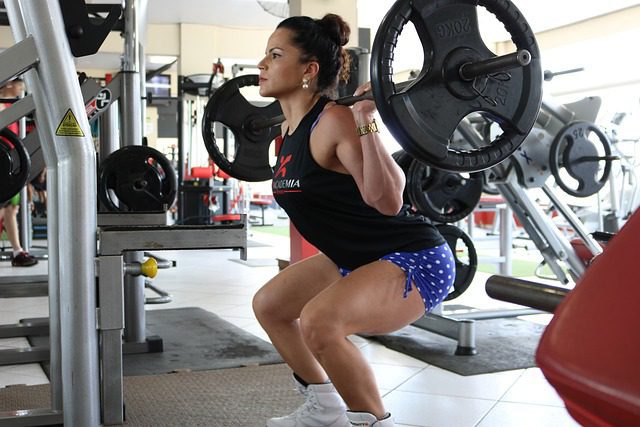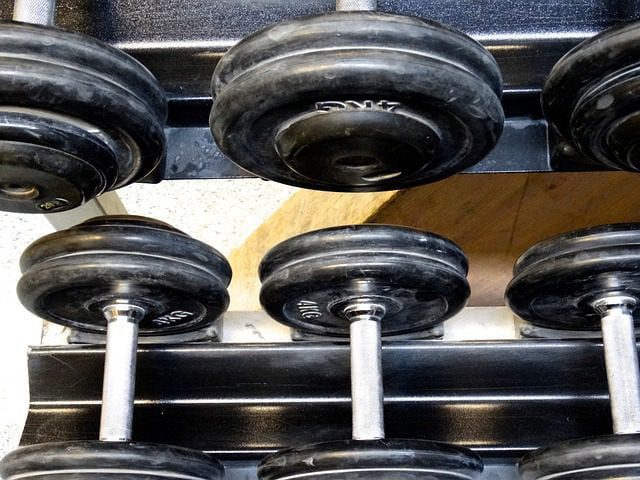Weight training for over 50 female: As women age, maintaining physical health becomes increasingly important yet challenging. Many women over 50 find themselves grappling with the effects of aging: muscle loss, decreased bone density, weight gain, and reduced energy levels. Traditional exercise routines may no longer be as effective or enjoyable, leading to frustration and a decline in overall well-being.
Must read: Best Free Workout Plan For Weight Loss Female
Problem
For women over 50, the prospect of starting or continuing a weight training regimen can be daunting. Concerns about injury, uncertainty about proper techniques, & intimidation by gym environments often deter many from embracing this powerful form of exercise. However, the consequences of not incorporating weight training into your fitness routine are significant. Without proper exercise, muscle mass and bone density can continue to decline, leading to increased risks of osteoporosis, falls, and a decrease in the ability to perform daily activities independently.
Solution
The solution lies in understanding and adopting a weight training routine tailored specifically for women over 50. With the right approach, weight lifting can be safe, effective, and empowering, leading to improved strength, enhanced mobility, and better overall health. This blog will guide you through the essentials of weight lifting for women over 50, including benefits, practical tips, and sample workouts, helping you regain control over your health and fitness.

Benefits of Weight Training for Women Over 50
Weight training offers numerous benefits, particularly for older women. Here are some key advantages:
1. Improved Muscle Mass and Strength
As we age, muscle mass naturally decreases. This process, known as sarcopenia, can begin as early as our 30s and accelerates after 50. Weight lifting helps to counteract this loss, maintaining and even building muscle mass and strength. This improvement not only enhances your physical appearance but also supports better functionality in everyday tasks.
2. Increased Bone Density
Osteoporosis is a significant concern for women over 50, as bone density tends to decrease with age, leading to fragile bones and an increased risk of fractures. Weight training stimulates bone formation and increases bone density, helping to combat osteoporosis and reduce the risk of bone injuries.
3. Enhanced Metabolic Rate
Muscle tissue burns more calories at rest compared to fat tissue. By increasing muscle mass through weight lifting, you can boost your resting metabolic rate, making it easier to manage your weight and reduce body fat.
4. Improved Joint Health
Weight training strengthens the muscles surrounding your joints, providing better support and stability. This can help to alleviate joint pain and reduce the risk of injuries, particularly in weight-bearing joints like the knees and hips.
5. Better Balance and Coordination
As we age, balance and coordination can deteriorate, increasing the risk of falls. Weight training improves these physical attributes, enhancing your ability to perform daily activities safely and effectively.
6. Mental Health Benefits
Regular exercise, including weight training, has been shown to improve mood, reduce anxiety, and enhance cognitive function. Engaging in a consistent weight training routine can boost your confidence and overall mental well-being.
Getting Started with Weight Training
Starting a weight training program can feel overwhelming, but with the right approach, it can be a manageable and enjoyable process. Here are some steps to help you get started:
1. Consult with a Healthcare Professional
Before beginning any new exercise regimen, it’s important to consult with your healthcare provider, especially if you have any pre-existing conditions or concerns. They can provide personalized recommendations and ensure that you are physically ready to start weight training.
2. Set Realistic Goals
Determine what you want to achieve with weight training. Whether it’s improving strength, increasing bone density, or simply enhancing overall fitness, having clear goals can help to keep you motivated and focused.
3. Learn Proper Techniques
Proper form is crucial to avoid injury and maximize the benefits of weight training. Consider working with a certified personal trainer who has experience with older adults. They can teach you the correct techniques and help you to develop a safe and effective workout plan.
4. Start Slowly
Begin with lighter weights and gradually increase the resistance as you become more comfortable and confident. Starting slowly allows your body to adapt to the new demands and reduces the risk of injury.
5. Incorporate a Variety of Exercises
A well-rounded weight training program includes exercises that target all major muscle groups. This balanced approach ensures that you are building strength evenly throughout your body and avoiding muscular imbalances.
Sample Weight Training Routine for Women Over 50
Here’s a sample weight training routine that you can try. This routine incorporates a mix of upper and lower body exercises, focusing on both strength and endurance. Remember to start with lighter weights and gradually increase the resistance as you progress.
Warm-Up
Before starting your weight training session, it’s important to warm up your muscles and joints. Spend 5-10 minutes performing light aerobic activities such as walking, cycling, or using an elliptical machine.
- Upper Body Exercises
- Dumbbell Chest Press
- Muscles Targeted: Chest, Shoulders, Triceps
- Reps: 10-12
- Sets: 2-3
Instructions: Lie on a bench with a dumbbell in each hand. Press the weights above your chest, then lower them back to the starting position.
Seated Dumbbell Shoulder Press
- Muscles Targeted: Shoulders, Triceps
- Reps: 10-12
- Sets: 2-3
Instructions: Sit on a bench with back support, holding a dumbbell in each hand at shoulder height. Press the weights overhead, then lower them back to the starting position.
Dumbbell Row
- Muscles Targeted: Back, Biceps
- Reps: 10-12
- Sets: 2-3
Instructions: Bend forward at the waist with a dumbbell in each hand. Pull the weights towards your torso, then lower them back to the starting position.
Lower Body Exercises
- Goblet Squat
- Muscles Targeted: Quads, Glutes, Hamstrings
- Reps: 10-12
- Sets: 2-3
Instructions: Hold a dumbbell close to your chest with both hands. Squat down by bending your knees and hips, then return to the starting position.
Lunges
- Muscles Targeted: Quads, Glutes, Hamstrings
- Reps: 10-12 (each leg)
- Sets: 2-3
Instructions: Step forward with one leg & lower your body until your front knee is at a 90-degree angle. Push back to the starting position and repeat on the other leg.
Deadlifts
- Muscles Targeted: Hamstrings, Glutes, Lower Back
- Reps: 10-12
- Sets: 2-3
Instructions: Stand with your feet hip-width apart, holding a dumbbell in each hand. Bend at the hips and knees, lowering the weights towards the floor, then return to the starting position.
Core Exercises
- Plank
- Muscles Targeted: Core
- Duration: 30-60 seconds
- Sets: 2-3
Instructions: Assume a push-up position with your weight on your forearms and toes. Keep your body in a straight line from head to heels.
Russian Twists
- Muscles Targeted: Core, Obliques
- Reps: 10-12 (each side)
- Sets: 2-3
Instructions: Sit on the floor with your knees bent and feet lifted. Hold a dumbbell with both hands and twist your torso to the right, then to the left.
Cool Down
After completing your weight training session, spend 5-10 minutes cooling down with light aerobic activity and stretching. Focus on the muscles you worked during your workout to help prevent soreness and improve flexibility.
Tips for Success
1. Stay Consistent
Consistency is key to seeing progress with weight training. Aim to complete your weight training workouts at least 2-3 times per week, allowing your muscles time to recover between sessions.
2. Listen to Your Body
Pay attention to how your body feels during and after your workouts. If you experience any pain or discomfort, stop the exercise and consult with a healthcare professional or trainer.
3. Stay Hydrated
Drink plenty of water before, during, and after your workouts to stay hydrated & support your body’s performance and recovery.
4. Eat a Balanced Diet
A healthy diet is essential for fuelling your workouts and supporting muscle growth and recovery. Ensure you are consuming a balanced diet rich in protein, healthy fats, and complex carbohydrates.
5. Get Enough Rest
Rest is crucial for muscle recovery and overall health. Aim for 7-9 hours of sleep per night and include rest days in your exercise routine to allow your muscles to repair and grow.
6. Track Your Progress
Keep a workout journal to track your exercises, weights, sets, and reps. This can help you monitor your progress and stay motivated as you see improvements over time.
Overcoming Common Challenges
1. Fear of Injury
Many women over 50 worry about getting injured while weight training. To minimize this risk, focus on using proper form, start with lighter weights, and progress gradually. Working with a knowledgeable trainer can also provide guidance and confidence.
2. Gym Intimidation
The gym environment can be intimidating, especially if you are new to weight training. Consider starting with at-home workouts using free weights or joining.
You can also read: Best Yoga Exercises For Weight Loss

Conclusion on Weight training for over 50 female | Women free weight workout
Weight training is an invaluable tool for women over 50, offering numerous benefits that extend beyond physical strength. It plays a critical role in maintaining muscle mass, improving bone density, enhancing metabolic rate, and supporting joint health. Beyond the physical advantages, weight training also boosts mental health, improving mood, reducing anxiety, and fostering a sense of empowerment and confidence.
Starting a weightlifting routine may seem intimidating at first, but with the right approach, it becomes a manageable and rewarding endeavour. By consulting with healthcare professionals, setting realistic goals, learning proper techniques, and incorporating a variety of exercises, you can create a safe and effective workout plan that suits your needs and capabilities.
FAQ on Weight lifting for women over 50 | Weight lifting older women
1. Why is weightlifting important for women over 50?
Weight lifting for women over 50 is crucial because it helps counteract the natural decline in muscle mass and bone density that occurs with age. This type of exercise can improve strength, enhance mobility, boost metabolism, and reduce the risk of osteoporosis and related fractures.
2. What are the benefits of weightlifting for older women?
The benefits of weightlifting for older women include:
- Increased Muscle Mass and Strength: Helps maintain and build muscle, improving physical functionality.
- Improved Bone Density: Reduces the risk of osteoporosis and fractures.
- Enhanced Metabolic Rate: Aids in weight management by increasing resting metabolic rate.
- Better Joint Health: Strengthens muscles around joints, reducing pain and risk of injury.
- Improved Balance and Coordination: Decreases the risk of falls.
- Mental Health Benefits: Enhances mood, reduces anxiety, and improves cognitive function.
3. How often should women over 50 engage in weight training?
For optimal results, women over 50 should aim to engage in weight training exercises 2-3 times per week. This frequency allows for sufficient muscle recovery and growth while minimising the risk of injury.
4. What types of exercises are best for women over 50?
A well-rounded weight training routine for women over 50 should include exercises that target all major muscle groups. Some effective exercises include:
- Upper Body: Dumbbell chest press, seated dumbbell shoulder press, dumbbell row.
- Lower Body: Goblet squats, lunges, deadlifts.
- Core: Planks, Russian twists.
5. Is it safe for women over 50 to start weightlifting?
Yes, weightlifting is safe for women over 50 when done correctly. It is essential to start with lighter weights, focus on proper form, and progress gradually. Consulting with a healthcare professional or a certified personal trainer can also help ensure safety.
6. How should women over 50 start a weightlifting routine?
To start a weightlifting routine, follow these steps:
- Consult with a Healthcare Professional: Get personalised recommendations and ensure you are physically ready.
- Set Realistic Goals: Determine what you want to achieve with weight training.
- Learn Proper Techniques: Consider working with a certified personal trainer.
- Start Slowly: Begin with lighter weights and gradually increase resistance.
- Incorporate a Variety of Exercises: Target all major muscle groups for a balanced routine.
7. What equipment is needed for a women’s free weight workout?
For a women’s free weight workout, you will need:
- Dumbbells: Various weights to accommodate different exercises and progressions.
- Bench: For exercises like chest presses and seated shoulder presses.
- Mat: For core exercises and stretching.
- Resistance Bands: Optional for added resistance and variety.
8. Can weightlifting help with weight management?
Yes, weightlifting can help with weight management. Increasing muscle mass boosts your resting metabolic rate, which means you burn more calories at rest. Combined with a balanced diet, weight lifting can support weight loss and maintenance.
9. What are some common mistakes to avoid when weightlifting?
Common mistakes to avoid when weightlifting include:
- Using Incorrect Form: This can lead to injury and reduce the effectiveness of exercises.
- Lifting Too Heavy Too Soon: Increases the risk of injury. Start with lighter weights and progress gradually.
- Neglecting Warm-Up and Cool-Down: Skipping these can increase the risk of injury and soreness.
- Inconsistent Training: Irregular workouts hinder progress. Aim for consistent training sessions.
10. How can women over 50 stay motivated to continue weight training?
To stay motivated, consider these tips:
- Set Specific Goals: Having clear objectives can keep you focused.
- Track Progress: Maintain a workout journal to monitor improvements.
- Join a Group or Class: Exercising with others can provide support and encouragement.
- Mix Up Your Routine: Varying exercises can keep workouts interesting and challenging.
- Celebrate Achievements: Recognise and celebrate milestones and improvements.
11. What should women over 50 eat to support their weight training routine?
A balanced diet is essential to support a weight training routine. Focus on:
- Protein: Important for muscle repair and growth. Include lean meats, fish, eggs, dairy, legumes, and nuts.
- Healthy Fats: Support overall health. Include avocados, nuts, seeds, and olive oil.
- Complex Carbohydrates: Provide energy. Include whole grains, fruits, and vegetables.
- Hydration: Drink plenty of water before, during, and after workouts.
12. How can women over 50 prevent injuries while weightlifting?
To prevent injuries:
- Use Proper Form: Focus on technique and consider working with a trainer.
- Start with Lighter Weights: Gradually increase resistance as you become more comfortable.
- Warm Up and Cool Down: Prepare your muscles and joints with a proper warm-up and stretch after your workout.
- Listen to Your Body: Stop if you feel pain and consult a healthcare professional if necessary.
13. What are some signs that a weight training program is effective?
Signs that your weight training program is effective include:
- Increased Strength: Lifting heavier weights or performing more reps.
- Improved Muscle Tone: Noticeable changes in muscle definition.
- Enhanced Endurance: Completing workouts with less fatigue.
- Better Balance and Coordination: Reduced risk of falls and improved daily functionality.
- Positive Changes in Body Composition: Reduced body fat and increased muscle mass.
14. How long does it take to see results from weight lifting?
The time it takes to see results from weight lifting can vary based on factors such as starting fitness level, consistency, and nutrition. Generally, you may start to notice improvements in strength and muscle tone within 4-6 weeks of consistent training.
15. Can weightlifting help with joint pain?
Yes, weight lifting can help with joint pain by strengthening the muscles around the joints, providing better support & reducing strain. However, it is essential to use proper form and avoid exercises that exacerbate pain. Consulting with a healthcare professional or trainer can help tailor exercises to your needs.
16. What role does rest play in a weightlifting routine for older women?
Rest is crucial in a weightlifting routine for older women. It allows muscles to repair and grow, reducing the risk of over-training and injury. Aim for 7-9 hours of sleep per night and include rest days in your workout schedule.
17. How can women over 50 incorporate weightlifting into a busy schedule?
To incorporate weight lifting into a busy schedule:
- Plan Workouts: Schedule sessions in advance and treat them as important appointments.
- Shorter Workouts: Opt for 30-minute sessions if time is limited.
- Combine Exercises: Use compound movements that work for multiple muscle groups simultaneously.
- At-Home Workouts: Use free weights or resistance bands at home for convenience.
18. Is it necessary to join a gym for weight lifting?
No, it is not necessary to join a gym for weight lifting. You can perform effective workouts at home using free weights, resistance bands, and body-weight exercises. However, a gym can provide access to a wider variety of equipment and the opportunity to work with trainers.
19. Can women over 50 still build muscle with weight lifting?
Yes, women over 50 can still build muscle with weight lifting. While muscle growth may occur more slowly compared to younger individuals, consistent training, proper nutrition, and adequate rest can lead to significant improvements in muscle mass and strength.
20. How can women over 50 overcome gym intimidation?
To overcome gym intimidation:
- Start Small: Begin with short, simple workouts to build confidence.
- Bring a Friend: Exercising with a friend can provide support and make the experience more enjoyable.
- Join a Class: Group classes tailored for older adults can create a supportive environment.
- Focus on Yourself: Remember that everyone is at the gym for their health, and most people are focused on their workouts, not judging others.
You can also read:
Best Language For Android Development in 2024
What is Physical Science: Study of Matter and Energy










Leave a Reply